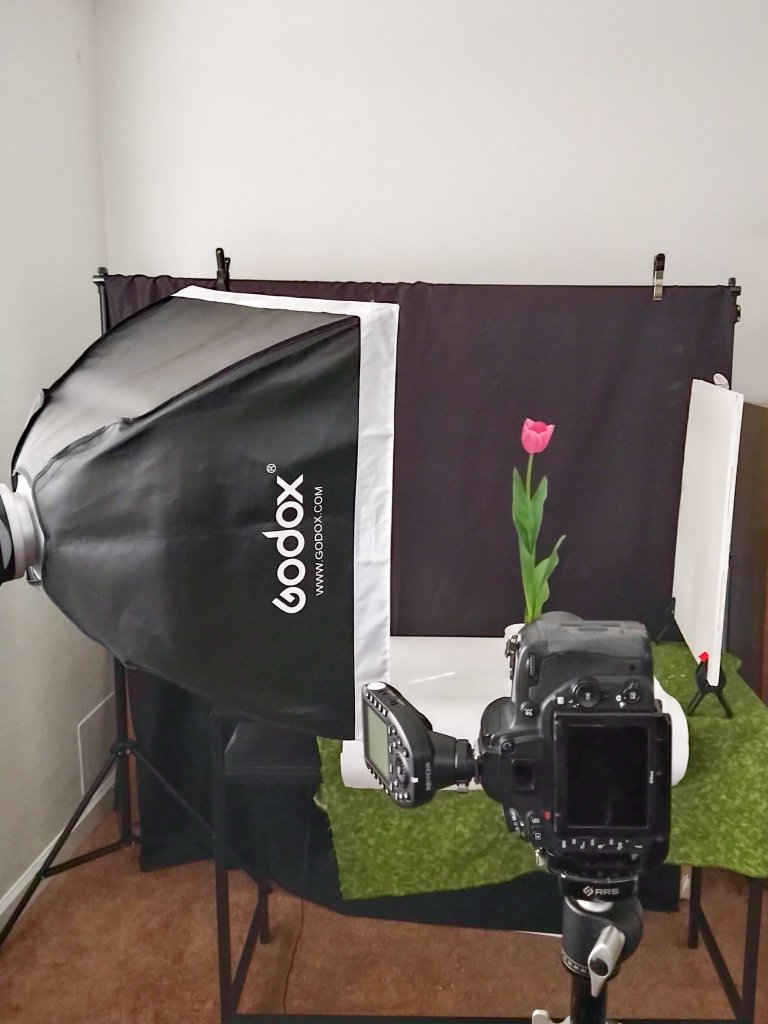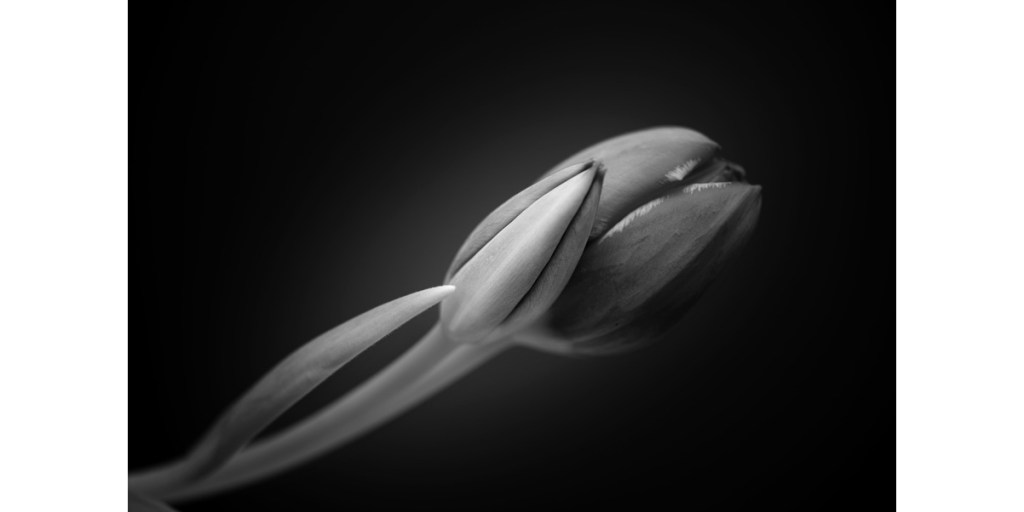Gasoline is expensive now. Photography at home rocks.
The idea
Sometime last December I bought a bouquet of tulips from Trader Joes’ to decorate my home. The next day I noticed that the flowers lacked that vitality typical of spring tulips. They seemed less turgid, more malleable, and more prone to developing interesting curves in their stalks and leaves. I put them under the camera and a new project was born, Winter Tulips.
The research
Photographing tulips in black and white with emphasis on their curves is far from an original idea. I knew, going in, that my monochromatic tulips were going to have lots of brothers and sisters out there, perhaps even an identical twin. To avoid redundancy, I did a quick search on google for “tulips in black and white”, and that returned hundreds of entries.
The beautiful work of Yoichiro Nishimura
One body of work called my attention for depicting my initial “vision” for this project very closely: the tulips in black and white by the Japanese photographer Yoichiro Nishimura: very white flowers on black background, emphasizing, among other aspects, their curves. You can easily collect one of his photographs for 4,000. I also found similar images by other photographers selling for an infinitesimal fraction of Nishimura’s photos, some of which pleased just me as much.
The execution
Keeping in mind what I don’t want my photos to look like (the work of well-established artists) , I started my little project. Every Saturday or so I buy a bouquet of unopened flowers at Trader Joe’s and I photograph each interesting flower over the following days.
I have a semi-permanent set up in the guest room (see below for photo), which I use to take one photo with the black background. I swap the background to white, and grey, to get a feel for how these flowers look on different tones. I then change the angle of the subject, and repeat. When I am done with all the angles of one flower, I pick another, until I have explored all suitable flowers in the bouquet. When I am done, I have three sets of photographs, one with a black background, and one with a “white” background (more on that later), and one on grey. The whole process takes about a couple of hours, and I end up with three possible monochromatic series within the same project, one on black, and one on white.
Although I tend to work on black background with the lens closed down, I sort of like the grey background for the subject in the featured image, which I photographed at f/3.5. The grey gives me a little flexibility to have a spot of light right in the middle of the frame, where I want to emphasize shape.

Projects versus series
Last year I wrote a sequence of posts about working in projects, and I used my project “Folhas Secas” as an example. My goal in that project was to show that dried leaves are interesting and still beautiful. The output of that effort was a series of pictures that have several common elements, for instance a black background, same crop ratio, etc.
There are no hard definitions of “project” and “series” in art. There are no authorities to enforce them either, so you can make up your own definitions if you don’t agree with me. I think that, to work in a project, one only needs a unifying concept, but to produce a series, one needs a set of boundaries to present that concept in a cohesive way.
I am still working on how I want the final look of my images to be, and that exploration is both fun and frustrating.
On my next post, hopefully, I will have made up my mind.
Resources
Digital Photography School has an article summarizing the benefits of and giving tips about working in projects, if you are interested: How to start and finish a photography project.
———————————————
________________________________

Leave a comment